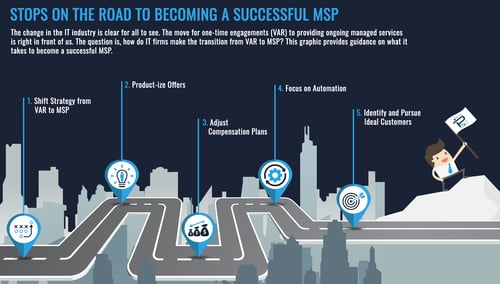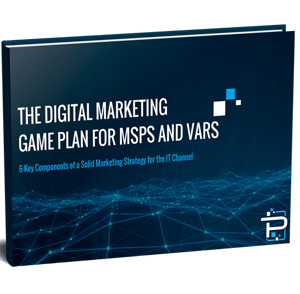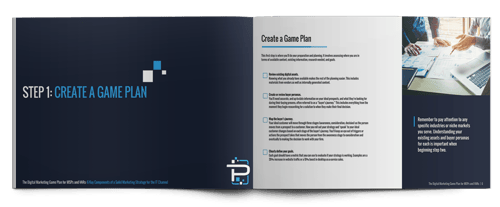One of the most important elements of your digital marketing efforts is providing valuable pieces of information your ideal customer can use to solve a problem they’re facing. We call these value pieces or content offers. You can promote them through social media ads to capture leads. Here’s how it usually goes:
Step 1: Evaluate the immediate needs of your ideal customer. For example, if you target CIOs in the legal industry, an immediate need might be adding GDPR compliance measures for data relating to their clients who are EU citizens. Here’s a tool to help with this.
Step 2: Choose a pain point that affects your target persona’s daily work life. If we continue with the example above, a daily pain point would be providing updates and developing training for employees on how to remain compliant with data sharing laws.
Step 3: Pick a solution that would make your ideal customer’s life easier. It could be a:
- Training manual
- Calculator (in spreadsheet format)
- Case study/Example(s) of how others solved a similar problem
- Video tutorial
- List of proven resources/tools tailored to their industry
Note: The type of solution should be chosen based on how quickly your ideal customer can consume the information. But the real determining factor is how useful the information is. Ask yourself, “Does this really help to solve the problem they’re facing?” It doesn’t have to be the comprehensive solution. (They’ll have to engage the services of your firm to get that.) Yet the solution should move the dial and prepare them for a larger solution that provides a complete resolution of the challenge they’re facing.
Step 4: Plan out the content offer. You’ll want to develop a planning document describing the content offer. The purpose of this document is to give a writer/contractor guidance on how to execute the creation of the content offer.
Step 5: Promote the content offer. The usual components of a promotional plan for a content offer include:
- Landing page
- Email
- Blog articles
- Social media posts (organic promotion)
- Social media ads on top platforms such as LinkedIn and Facebook (paid promotion)
Note: The writer or outside contractor you hire to create the content offer may be able to help you out with this portion of things. Consider rolling promotional writing into the agreement you draw up with the person writing or developing your content offer.
Step 6: Monitor results. Be sure to employ a marketing campaign management and monitoring system to help you deploy and monitor the results of your content offer. We recommend tools like HubSpot or SharpSpring for marketing automation of follow-up emails, landing pages, and social media promotion of the offer.
There’s a lot that goes into getting your content offer into the right hands, but without a solid idea of what the offer will be, none of the other steps really matter. Let’s take a closer look at the types of offers you can create to draw in new leads for your firm.
Best Types of Content Offers for MSPs and VARs

As you develop your content offers, one of the keys to success is ease of consumption for the reader. You want to make sure the person receiving the information you have to offer gets the general gist of the quality and value of your piece just by perusing the offer itself.
As you choose the type of offer you’d like to create, think of your ideal customer’s average day.
A few questions to ask:
-
Does the person view video?
-
Does he visit an online community of professionals in his industry?
-
Does she review Twitter or Facebook?
-
Does he frequent certain blogs?
One of the best ways to find the answer to this question is to simply ask a few people in your industry – particularly the ideal customer – where they ‘hang out’ online. This helps you understand the type of content they like to review the most.
Keep in mind, though, that if your information is extremely valuable, the format isn’t a make-or-break proposition.
Achievement-hungry professionals will move heaven and earth to gain access to information that helps them reach and supersede their goals. If your information solves a major challenge they’re facing, you’ll have them eating out of the palm of your hand, reaching out to connect with you. Bottom line: Make value and quality your top priority when developing content offers.
Let’s take a close look at the types of content offers that best suit busy MSP or VAR operations:
Infographics:

These pieces are easy to peruse. You want to have an optimal mix of written content and graphics to guide the viewer through the content piece.
Videos: Keep in mind video is a multi-sensory experience. Meaning, the viewer won’t really be able to multitask as they consume what you’ve created. That means your content has to be stellar and filled with short bites of high-impact information.
eBooks:

With ebooks you have the opportunity to really wow your reader with a mix of solid information, stellar graphics, and industry examples. Think of ebooks as downloadable chapter-books for professionals. They need to be scannable, with step-by-step instructions on how to solves a challenge your ideal customer is facing. Think of it as a longer blog piece of 2,000 to 3,000 words.
White papers:

Usually white papers are based on the latest statistics about an issue within an industry. This requires a bit of research and a professional writer who understands how to weave a story out of the ocean of statistics available about business topics today. These are often chart-heavy documents that include use cases and case studies to bring the statistics to life for the reader.
Case studies: If you have access to information about a success story you’ve created for a client, by all means, share it with ideal customers. In rare instances, you can use a case study as a content offer when you have a ton of detailed information about how you created stellar results for the client you’ve served. This usually makes sense under the following circumstances:
-
You already have an extensive library of case studies to spur the sales process with potential customers.
-
The case study you’d like to make into a content offer has an outcome that’s very desirable to your ideal customer. Example, “Here’s How We Helped a Healthcare Management Company Reduce Network Operation Costs by 50% with This Simple Approach.”
-
The customer, of course, agrees to allow the release of the details of the case study.
These content offers are rare but highly effective for driving leads to businesses.
Webinars: Many firms get solid results from identifying a pain point, working with an outside expert in the field, and presenting a webinar where attendees can follow along to see case studies, statistics, and key insights in real time. One of the big draws for webinars is the chance to ask questions and get immediate answers.
Templates: Templates usually take the form of a downloadable Word or Excel spreadsheet and offer an outline of a manual or a form that will save your ideal customer time and effort. An example would be a training document or manual they can customize and share with others within their organization.
Calculators:

Normally firms use these to estimate the potential cost of a product or service. These are quite useful when your ideal customer is budgeting/anticipating the financial impact of a major purchase on their operations.
This list is a good place to start, but leave room for creativity. If you see an opportunity to create something unique that meets the content offer criteria (easy-to-consume/high-value), then go for it.
Mind the Gate: How to Communicate Value on Your Content Offer’s Landing Page

Content offers come with a unique challenge. In marketing, we call it gating the information. Gating simply means we ask our potential lead for their contact information before we make the desired information available to them. People are increasingly guarded about their contact information so the risk of sharing their contact information has to be worth the reward.
The gate is also called the landing page. Creating a compelling landing page is a science marketers constantly study and tweak to find just the right formula to draw in potential customers. As with any formula, there are key components you want to include. Here are three we’ve identified:
-
Include a Privacy Notice: Let the potential lead know what you’re going to do with their information. A simple statement at the bottom of the contact section of your landing page stating, “We will not rent, sell, or otherwise misuse your contact information” goes a long way to giving the lead confidence to share their information. It lets them know you understand their concerns about information security and you’re willing to state your commitment up front to not violating their privacy.
-
Create Powerful Headlines: Create a landing page that clearly expresses what the lead will get if they enter their information. This includes creating powerful, direct, value-driven headline for your landing pages such as, “Outsmart Cybercriminals with This Powerful Data Security Guide.”
-
Include a Graphical Representation of the Offer: Be sure to include graphics that give the lead a preview of the content offer. This could be an eBook cover, a snapshot of the manual, or a thumbnail of the first frame of a video.

Test, test, and test your landing pages some more to find out if they’re pulling in the right amount of leads based on the traffic you’re sending to them. If you’re not getting at least a 2.35 percent conversion rate, it’s time to make major changes. Hint: Start with the headline as it’s usually the first thing the lead sees when s/he hits the landing page.
Getting Started with Your Next Content Offer
Powerful content offers take work. A journey to a content offer that brings in an avalanche of leads starts with a keen understanding of who your target audience is and what their needs are. If you’re more focused on developing the operations of your business, you may want to work with a firm that can assist in the content offer development process.
Reach out to Presh Marketing Solutions to continue the conversation around creating the best content offers for your MSP or VAR.